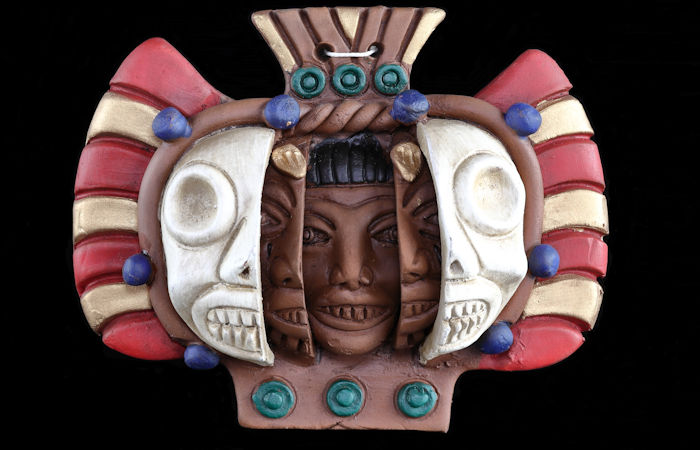Supay: God Of Death And Underworld And Ruler Over Race Of Demons According To Inca Beliefs
A. Sutherland - AncientPages.com - In the Inca and Aymara mythologies, Supay ('Andean Devil') was both the god of death and powerful ruler of the Incan underworld Ukhu Pacha (Uku Pacha), as well as a race of demons.
Unlike Europeans, the indigenous people did not reject Supay. They were so afraid of him that they invoked him and begged him not to harm them. Credit: Adobe Stock - JIT
Supay was responsible for balancing good and evil.
Supay is listed as one of the most wicked gods. He was the one who protected the path of the dead. The Incas believed that death was a new beginning with the Inca gods. Despite this pessimistic view, many Inca people worshiped him because they believed in his power to grant them favors through offerings and rituals.
He was depicted as a figure resembling demons (jaguar head, longhorns, wise eyes, puma body, and sharp teeth). Supay was a shapeshifter that could surprise by taking the form of an Inca woman or a handsome Inca man; in the same way, he could transform into any animal he wanted.
The domain of Supay was located in the deep earth, and his underworld is also known as the "inner world" or "below the world." Therefore, as the god of minerals, Supay was worshipped by miners. Today, his worship is still alive among Andean miners and excavators.
According to Inca mythology, the god Supay's underground realm was Ukhu Pacha (Uku Pacha), one of three realms (or 'Pacha') that divides the cosmos.
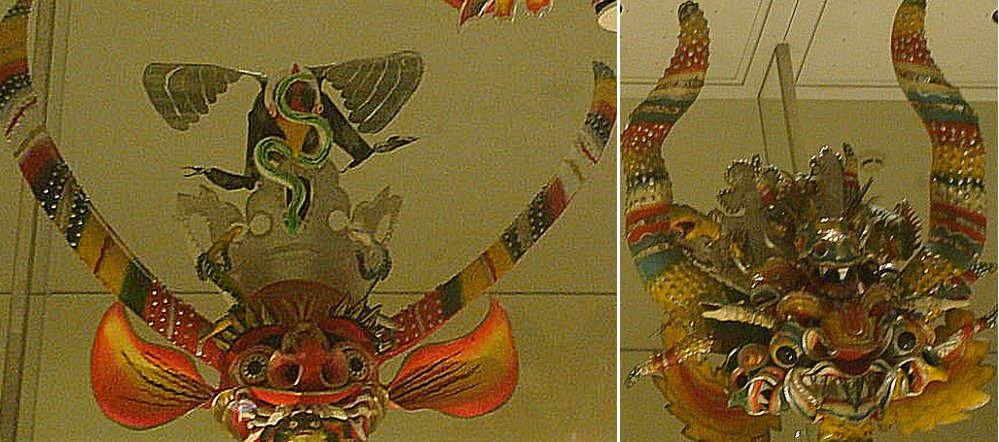 Left: 18th-century painting of the Danza de Los diablos de Túcume, region of Túcume, Peru. source Right: Different models of Diablada masks in an exhibition in the British Museum. source
Left: 18th-century painting of the Danza de Los diablos de Túcume, region of Túcume, Peru. source Right: Different models of Diablada masks in an exhibition in the British Museum. source
Two other realms are Hanan Pacha and Kay Pacha, which along with Ukhu Pacha, resemble Catholic beliefs in the earth, heaven, and hell, a concept also known in other religions.
Chronicler and writer Garcilaso de la Vega (1539 – 1616) was a son of a Spanish conquistador and an Inca noblewoman born in the early years of the conquest. He was widely recognized for his histories of Inca history, culture, and society. The chronicler Vega characterized Supay's Uku Pacha as an underworld, a place of pain and suffering.
The wicked were sent to the 'lowest earth, the so-called 'house of the devil.'
However, the Uku Pacha underworld was not considered a negative concept. Incas regarded the place's subterranean water as life-sustaining springs, which link the human realm with the inner world.
In his 'Handbook of Inca Mythology,' Paul Steele says that Uku Pacha was linked to 'the feminine earth mother and the bones of the ancestors.'
When the Spaniards colonized the Americas, Christian priests called the Christian Devil 'Supay.' Unlike Europeans, the indigenous people accepted Supay. They were so afraid of him that they invoked him and begged him not to harm them.
Today, the ancient symbolism of this terrifying mythological figure, ' diablo,' has been replaced with another practice.
This new tradition makes Supay the main character in the 'Diablada' carnival, a part of the cultural traditions in Bolivia, Chile, Peru, and other Andean countries.
The Diablada (or 'Danza de Los Diablos,' which means 'Dance of the Devils') is a popular dance characterized by the mask and devil suit worn by the performers.
The Spaniards destroyed the Incan empire and took control over the country, yet the ancient belief in Supay lives in indigenous Peruvians' daily lives. The Catholic Church became the dominant religious power in Peru, and the word 'Supay' applies to the Devil.
Written by – A. Sutherland - AncientPages.com Senior Staff Writer
Updated on March 8, 2023
Copyright © AncientPages.com All rights reserved. This material may not be published, broadcast, rewritten or redistributed in whole or part without the express written permission of AncientPages.com
Expand for referencesReferences:
Klauser William., The Esoteric Codex: Deities of the Underworld
Steele P., Handbook of Inca Mythology
More From Ancient Pages
-
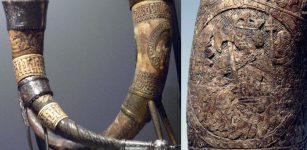 Ancient Icelandic Drinking Horn Reveals An Interesting Story About Saint-King Olaf
Ancient Traditions And Customs | Mar 29, 2017
Ancient Icelandic Drinking Horn Reveals An Interesting Story About Saint-King Olaf
Ancient Traditions And Customs | Mar 29, 2017 -
 Ancient Scar Dragon Plaque And The Viking Boat To The Otherworld
Artifacts | Feb 4, 2016
Ancient Scar Dragon Plaque And The Viking Boat To The Otherworld
Artifacts | Feb 4, 2016 -
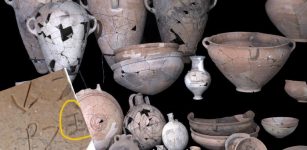 Canaanite Temple Dated To 12th Century BC Unearthed At Lachish, Israel
Archaeology | Feb 19, 2020
Canaanite Temple Dated To 12th Century BC Unearthed At Lachish, Israel
Archaeology | Feb 19, 2020 -
 Intriguing Genetics: First Ancient Irish Human Genomes – Sequenced
Archaeology | Dec 29, 2015
Intriguing Genetics: First Ancient Irish Human Genomes – Sequenced
Archaeology | Dec 29, 2015 -
 Ancient Secrets Of Polish Ciemna Cave Inhabited By Humans 120,000 Years Ago
Featured Stories | Nov 22, 2016
Ancient Secrets Of Polish Ciemna Cave Inhabited By Humans 120,000 Years Ago
Featured Stories | Nov 22, 2016 -
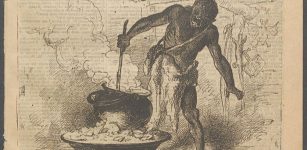 Obeah: Who Were The Feared Shadow Killers Of Jamaica?
Ancient Traditions And Customs | Sep 24, 2018
Obeah: Who Were The Feared Shadow Killers Of Jamaica?
Ancient Traditions And Customs | Sep 24, 2018 -
 Enigma Of The Mysterious Ancient Shining Twins – The Cosmos Connection – Part 2
Ancient Mysteries | Jun 8, 2020
Enigma Of The Mysterious Ancient Shining Twins – The Cosmos Connection – Part 2
Ancient Mysteries | Jun 8, 2020 -
 Spectacular Chand Baori Stepwell Of India That Resembles Reversed Pyramid
Featured Stories | Jul 14, 2015
Spectacular Chand Baori Stepwell Of India That Resembles Reversed Pyramid
Featured Stories | Jul 14, 2015 -
 Vikings’ Legacy Is Still Alive In Ireland – DNA, Ancient Ruins And Modern Cites Reveal
Civilizations | May 22, 2021
Vikings’ Legacy Is Still Alive In Ireland – DNA, Ancient Ruins And Modern Cites Reveal
Civilizations | May 22, 2021 -
 North America’s First Languages Originate From Siberia
Linguistic Discoveries | Apr 10, 2024
North America’s First Languages Originate From Siberia
Linguistic Discoveries | Apr 10, 2024 -
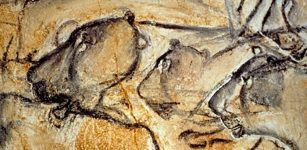 Chauvet-Pont d’Arc Cave And Surrounding Landscape – What Did The Ancient Artists See?
Archaeology | Apr 29, 2021
Chauvet-Pont d’Arc Cave And Surrounding Landscape – What Did The Ancient Artists See?
Archaeology | Apr 29, 2021 -
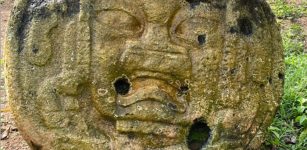 Two Huge Olmec Reliefs Recovered After Anonymous Tip
Archaeology | Aug 9, 2022
Two Huge Olmec Reliefs Recovered After Anonymous Tip
Archaeology | Aug 9, 2022 -
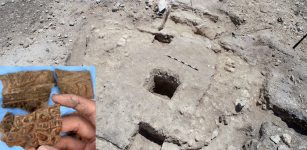 Exploring Ancient Secrets Of An Ancestral Maya Neighborhood And Some Puzzling Buildings
Archaeology | Sep 10, 2022
Exploring Ancient Secrets Of An Ancestral Maya Neighborhood And Some Puzzling Buildings
Archaeology | Sep 10, 2022 -
 4000-Year-Old Large Bronze Age Cemetery Discovered In Lower Silesia, Poland
Civilizations | Sep 21, 2015
4000-Year-Old Large Bronze Age Cemetery Discovered In Lower Silesia, Poland
Civilizations | Sep 21, 2015 -
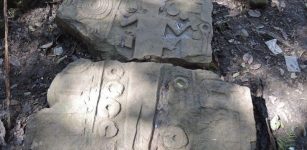 Mystery Of The Ancient Forgotten Mizoram Civilization And Lost City Of Vangchhia
Civilizations | Jun 16, 2020
Mystery Of The Ancient Forgotten Mizoram Civilization And Lost City Of Vangchhia
Civilizations | Jun 16, 2020 -
 Was Napoleon Bonaparte Defeated At Waterloo Because Of Volcanic Eruption?
Archaeology | Aug 22, 2018
Was Napoleon Bonaparte Defeated At Waterloo Because Of Volcanic Eruption?
Archaeology | Aug 22, 2018 -
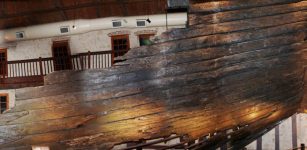 Batavia Shipwreck Reveals Secrets Of 17th-Century Dutch Seafaring Domination
Archaeology | Oct 30, 2021
Batavia Shipwreck Reveals Secrets Of 17th-Century Dutch Seafaring Domination
Archaeology | Oct 30, 2021 -
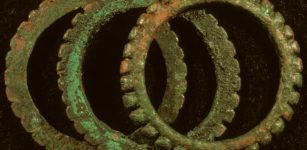 Metal Artifacts In Southeast Asia Archaeological Theory – Challenged
Archaeology | Jul 31, 2021
Metal Artifacts In Southeast Asia Archaeological Theory – Challenged
Archaeology | Jul 31, 2021 -
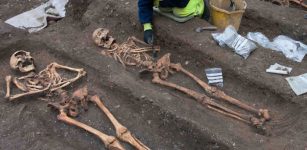 Medieval Friars Were ‘Riddled With Parasites,’ Study Finds
Archaeology | Aug 19, 2022
Medieval Friars Were ‘Riddled With Parasites,’ Study Finds
Archaeology | Aug 19, 2022 -
 Baalbek: Were The Megaliths Put In Place Under Herod?
Archaeology | May 27, 2019
Baalbek: Were The Megaliths Put In Place Under Herod?
Archaeology | May 27, 2019

